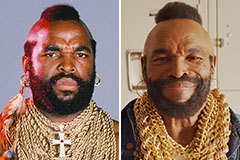The radiology workflow is a complex sequence involving multiple steps. It begins with a consultation, followed by examination. The radiologist then reviews the scans to generate a diagnosis. This data is then with the referring practitioner for management.
Efficient workflow management is essential to guarantee timely and accurate patient care.
ul
li Optimization of tasks can improve workflow efficiency.
li Concise communication between personnel is crucial.
li Regular training and upkeep for radiology is necessary.
ul
An In-Depth Look at Medical Imaging Procedures
Medical imaging plays a essential role in diagnosing and treating a broad range of medical conditions. It involves using various technologies to create images of the inside of the body, allowing physicians to visualize organs, tissues, and bones. This detailed guide will walk you through the steps involved in medical imaging, providing a clear understanding of the process.
- Initially, your physician will determine the type of imaging study that is most appropriate for your needs. This decision is based on factors such as the region of concern, the suspected illness, and your medical history.
- Next, you will be appointed for the imaging procedure. Before the study, you may be asked to fast for a certain period of time or to remove any metal accessories.
- During the imaging study, you will remain still on a table while the imaging machine captures images of your body. Depending on the type of imaging used, this may involve exposure to electromagnetic waves.
- After the imaging study, the results will be reviewed by a radiologist, who is a medical professional trained in interpreting imaging studies. The radiologist will then create a report that summarizes their findings and provides recommendations for further evaluation.
Decoding the Radiology Process: From Scan to Diagnosis
The path of radiology begins with a clinical examination. This leverages specialized equipment to create detailed representations of the structure of your body. These displays are then interpreted by a specialist, a physician trained to identify irregularities. Based on their evaluation, the radiologist provides a comprehensive summary that informs clinicians in making diagnoses.
Additionally, radiology plays a vital part in monitoring illness progression and assessing the impact of therapies.
Illuminating the Path: How Radiologists Interpret Images
Radiologists play a pivotal/crucial/essential role in diagnosing/evaluating/assessing a wide range of medical/clinical/health conditions. Their expertise lies in interpreting/analyzing/decoding medical images, which provide/reveal/offer valuable clues/insights/information about the human body/patient's health/internal structures. Using their specialized/in-depth/comprehensive knowledge of anatomy, physiology, and imaging techniques/methods/procedures, radiologists can detect/identify/recognize abnormalities/irregularities/variations that may not be evident/apparent/visible to the naked eye.
Their interpretations/analyses/reports serve as a cornerstone/foundation/basis for patient care/treatment/management, guiding physicians in making/formulating/determining diagnoses/treatment plans/further investigations. The process of image interpretation/analysis/reading involves a systematic/thorough/detailed examination of images, looking for/searching for/identifying specific features/patterns/indications that may be indicative of disease/illness/disorder.
Radiologists often collaborate/work with/consult other healthcare professionals to ensure a comprehensive/holistic/integrated approach to patient care.
Radiology's Inner Workings
Radiology stands as a pillar of modern medical diagnostics, utilizing specialized visualization to provide crucial insights into the human body. This compelling field employs cutting-edge equipment and techniques to capture precise images of internal structures, revealing a wealth of information about health. Radiologists, skilled professionals trained in interpreting these images, play a vital role in identifying a wide range of medical conditions.
From detecting unapparent abnormalities to guiding surgical procedures, radiology's impact on patient care is profound and ever-evolving. In addition, advancements in imaging modalities such as MRI continue to push the boundaries of what is possible, leading to more reliable diagnoses and improved treatment outcomes.
Your Journey Through Radiology: A Patient's Perspective
As an individual in need of medical care, facing medical scans can feel both intimidating. , Despite this, understanding the experience can help alleviate your fears. Firstly, radiology utilizes advanced imaging tools to visualize internal organs and tissues providing crucial information for identifying various medical situations.
Throughout your radiology visit, you can expect a friendly and helpful staff to walk you through the process. They will provide details about the imaging test, answer any inquiries you may have, and get more info ensure your ease throughout.
- Leading up to your procedure, it's important to follow any specific recommendations provided by your doctor. This may include fasting for a certain period.
- , While undergoing the scan, you may be asked to lie still on a table during the examination by the radiographer operates the machinery. You will likely hear some noises from the machine, but it is safe.
- Following the procedure, you will likely receive additional instructions from the staff. The images obtained will then be reviewed by a radiologist, who will offer their insights to your physician, who will share with you the findings and recommend any necessary next steps.
 Mr. T Then & Now!
Mr. T Then & Now! Mason Gamble Then & Now!
Mason Gamble Then & Now! Michael Bower Then & Now!
Michael Bower Then & Now! Yasmine Bleeth Then & Now!
Yasmine Bleeth Then & Now! Heath Ledger Then & Now!
Heath Ledger Then & Now!